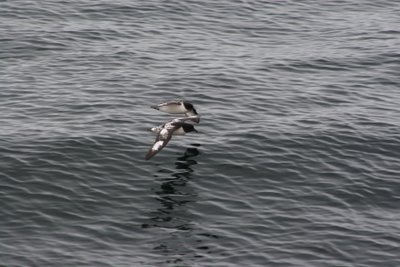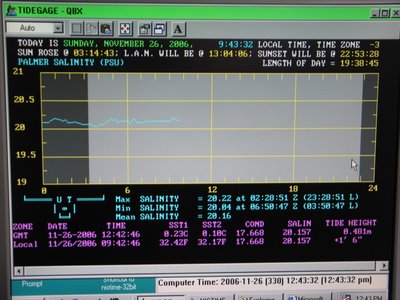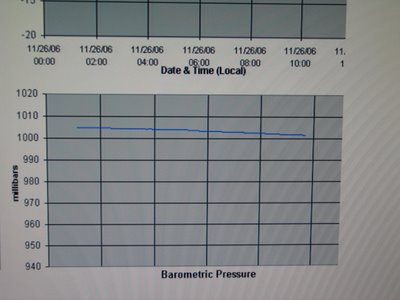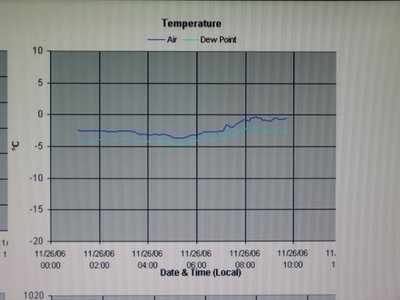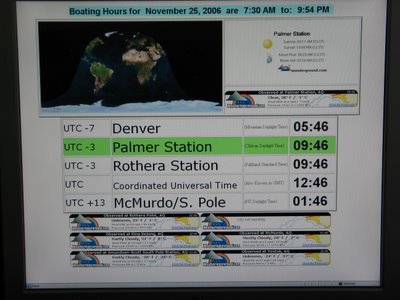
The mission here is to capture the textures of the ice, both photographically and also with molding material in order to recreate those textures back home in the studio, using the lost wax process to cast textured shapes into glass sculpture . This is an incredible ice sculpture that I fished out of Arthur Harbor a few days ago. There is a picture of me carrying it across the rocks in my post "Ice Chaser". Art may have taken a better picture of this which I will post later.

This morning we had a photo session. Soon Art will figure out how to use his fancy new Nikon 200. This camera is so complicated that it takes a computer genius to figure it out. Meanwhile my little Canon has done a heroic job. I'm hoping that eventually we figure out a way to increase the contrast of the ice surfaces to get more depth and definition of the texture. I need as precise and accurate a record as possible to recreate them in the studio. If they white out in the photos, I'll never have a record of how intricate those surfaces could be?

I found this one lying on the north side of Gamage Point yesterday. I knocked its head off and stood it up on the rocks:

After dinner I went out and it was still there. I noticed that over the six or so hours the ice had smoothed over and the texture had diminished emphasizing the form.

In the middle of the photos session I looked down off the pier to see this texture.

We experimented with different silicone / catalyst / thickener ratios.

It is summer here. The temperature has varied in the past week between about -5ºC and +5ºC. This morning is was drizzling or snowing depending on which window you looked out of. But this afternoon the sun came out so we took a zodiac out to Old Palmer, about one Km away. It was a dazzling ride. By this evening it was snowing again. Art at the helm:

On the way out we encountered this piece of bar ice with its typical battuto texture. Since it had snowed earlier the top was frosty.

Ice bergs typically have 80% or more of their mass in the water.

I caught this shot of the underwater battuto refracting the light through the surface ripples. The water was especially clear today, and very blue.

This bird was guarding our boat at Old Palmer.


Landing on Old Palmer near the cache. We have a two mile boating radius here There are about five caches including tents, radios, and food on the various island and points. Hard to think that the weather gets so severe here that you couldn't get back 1 kilometer to the station. November is supposed to be the snowiest month, even if summer, but we have hardly seen it. Ben told us about being here in October, a few weeks ago, when the sleet was blowing 70 knots. You needed goggles just to go outside. He said it was like riding a motorcycle on the freeway during a snow storm just to walk outside!

You can see the foundations of the old Palmer Station from about 35 years ago.

We walked across this saddle on our way to the ice bridge:

This cave was unbelievable! First, there is the characteristic "battuto" texture on the walls and ceiling of the cave, only large than we have seen in clear ice in the water.

It was dripping and muddy, plus icicles were falling as we watched. We didn't go inside.

Looking up at the ceiling, which was glowing from sun penetration through the ice.

On the way back Mount Williams, in the middle of Anvers Island broke through the clouds for a while.

Suddenly there were icebergs we hadn't seen going in.

I expected to see a Polar Bear sitting there!



But this guy growled at us passing by.
 Last night I walked to the top of the glacier behind Palmer Station. The view at the top was incredible. This is certainly the most beautiful place I have ever been. In one sense, being at the top reminded me of being on the coast in Mendocino, with the bluffs made of ice rather than stone and trees. You could hear the surf playing up and down the coast. It was the only sound at the top. This is the view to the south southeast. These mountains extend out from Cape Renard, a thumb of land sticking out of the Antarctica Peninsula.
Last night I walked to the top of the glacier behind Palmer Station. The view at the top was incredible. This is certainly the most beautiful place I have ever been. In one sense, being at the top reminded me of being on the coast in Mendocino, with the bluffs made of ice rather than stone and trees. You could hear the surf playing up and down the coast. It was the only sound at the top. This is the view to the south southeast. These mountains extend out from Cape Renard, a thumb of land sticking out of the Antarctica Peninsula. To the east is Mt. William, 1200 or 1300 meters high.
To the east is Mt. William, 1200 or 1300 meters high.
 Cape Renard extending past the visible tip of Anvers Island. This is the view over the back side of the Station:
Cape Renard extending past the visible tip of Anvers Island. This is the view over the back side of the Station:
 Most of the way down you can hear two sounds. One is water trickling beneath your feet and the snow. It's the glacier melting at its edge. The other is occasional crashes of ice. At the station you think the crashes are aways ice falling into the water, but when you see how far back the erosion extends, it's obvious that the noise mostly comes form internal rearrangement of the ice as it flows towards Arthur Harbor.
Most of the way down you can hear two sounds. One is water trickling beneath your feet and the snow. It's the glacier melting at its edge. The other is occasional crashes of ice. At the station you think the crashes are aways ice falling into the water, but when you see how far back the erosion extends, it's obvious that the noise mostly comes form internal rearrangement of the ice as it flows towards Arthur Harbor. The view of Palmer Station from half way up the glacier:
The view of Palmer Station from half way up the glacier: Our Island paradise. This is the view of the islands we can boat to. On a sunny day like this its hard to imagine the weather can get so fierce that you would be able to get home from the closest rock.
Our Island paradise. This is the view of the islands we can boat to. On a sunny day like this its hard to imagine the weather can get so fierce that you would be able to get home from the closest rock.

 This chinstrap penguin is curious about what is going on in our refrigerator container.
This chinstrap penguin is curious about what is going on in our refrigerator container.



























